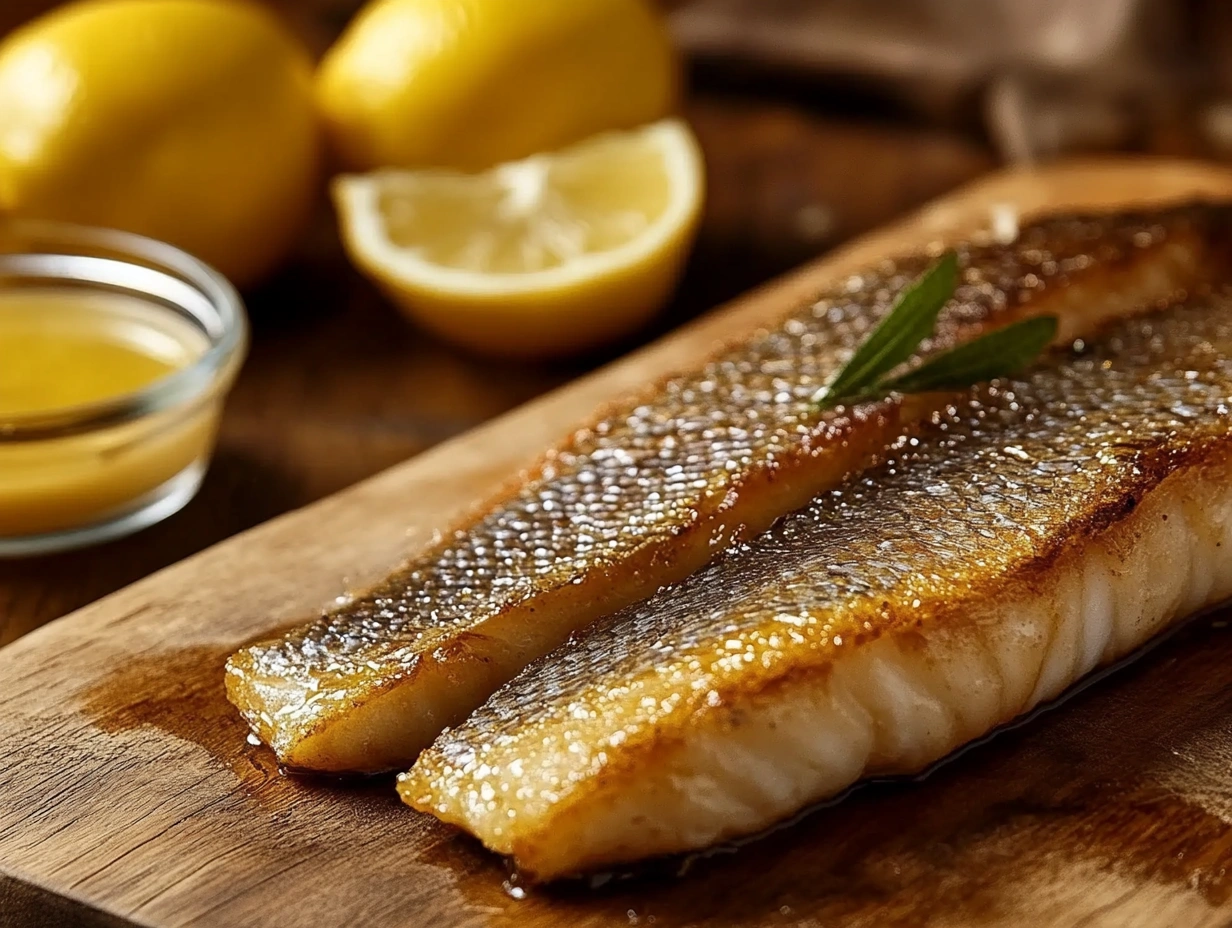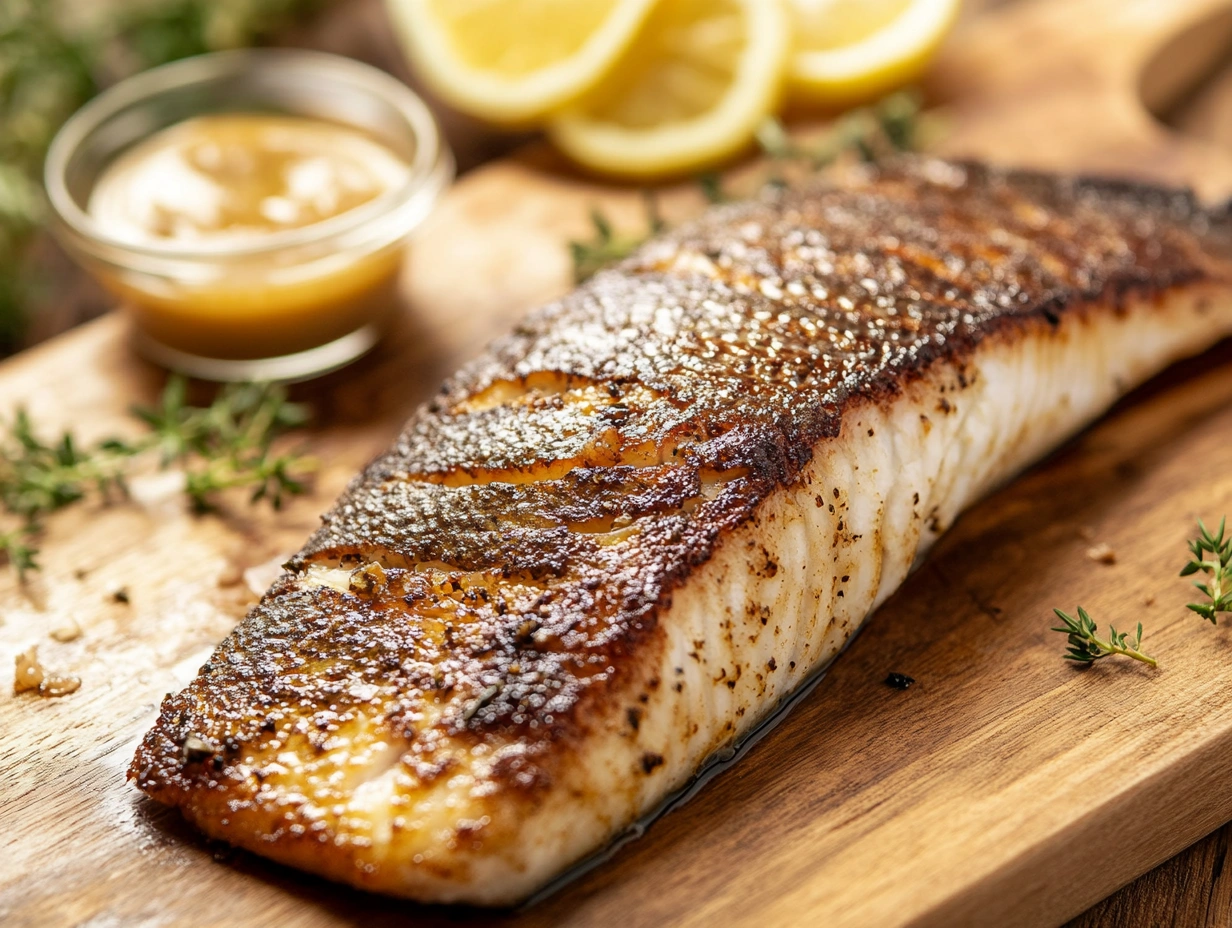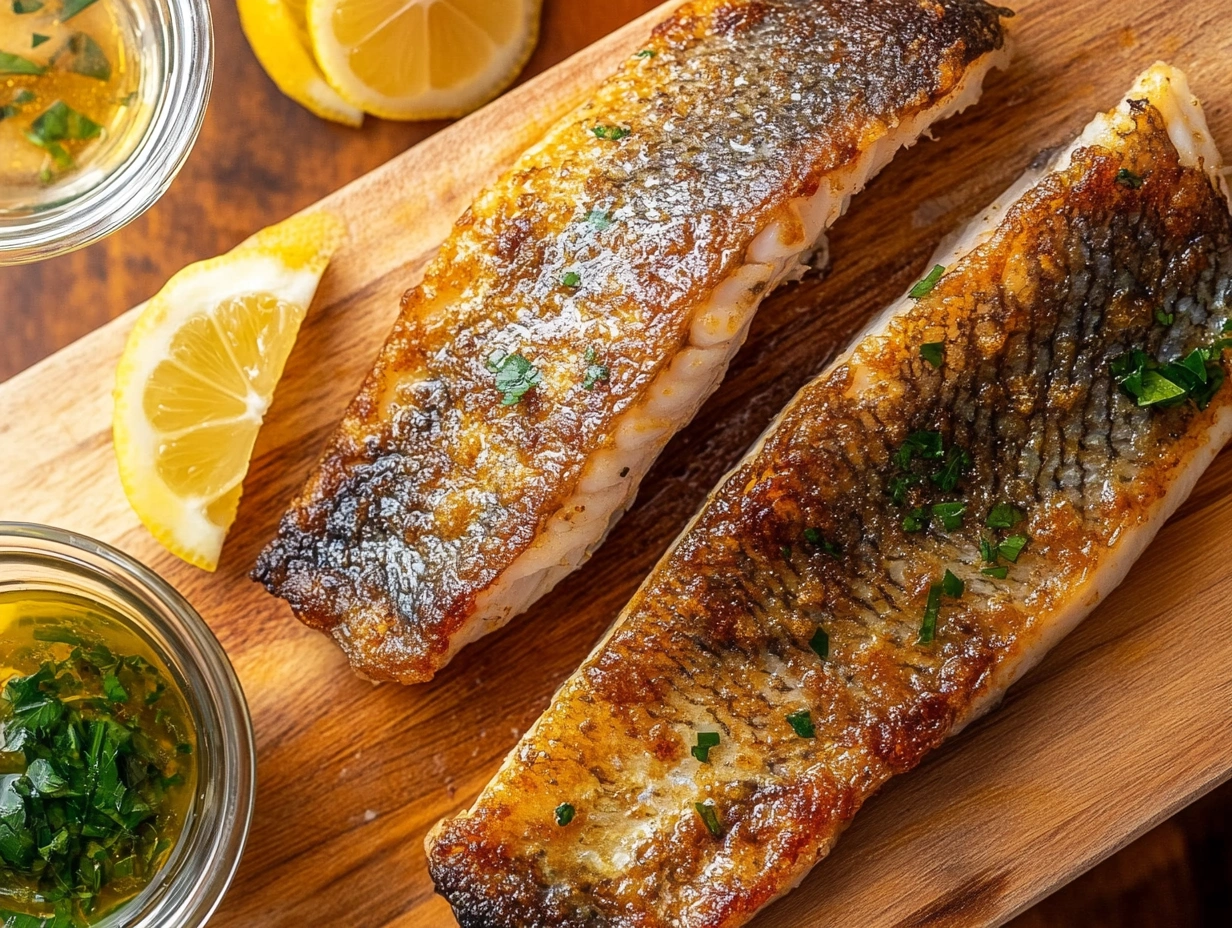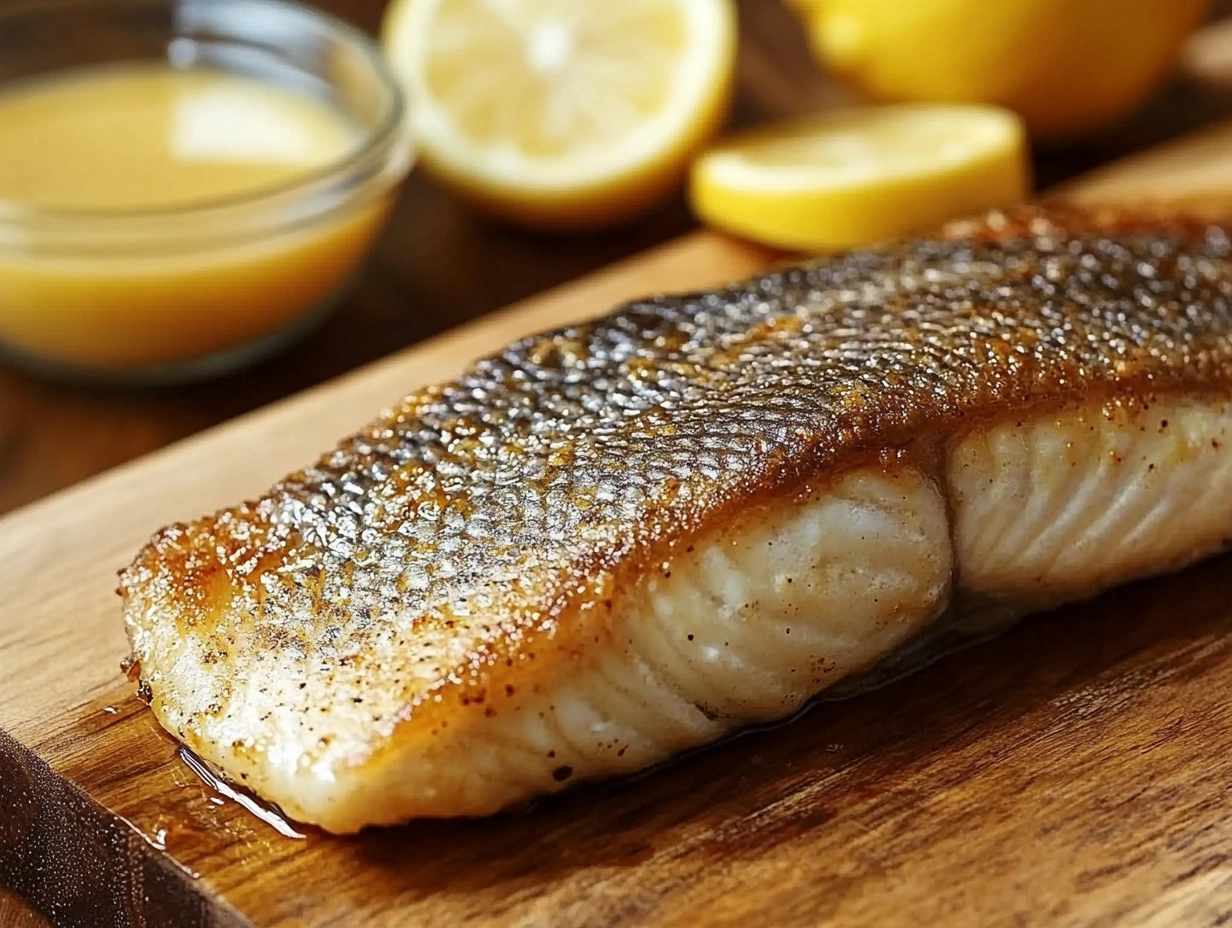Introduction
Branzino, also known as Mediterranean sea bass, holds a special place in kitchens and restaurants worldwide. Its mild, delicate flavor and versatility make it a favorite choice in many cuisines. However, one common question often comes up: Do you eat branzino skin? The short answer is: yes! When cooked correctly, branzino skin provides a nutritious and enjoyable texture that elevates the overall dining experience.
In this guide, you’ll learn everything about branzino skin—from its edibility to how to prepare it. Additionally, we will discuss safety tips to ensure you get the most out of your meal. So, let’s dive in and discover how to eat branzino skin in a way that adds value to your dish.
1. What is Branzino?
1.1. An Introduction to Branzino
Branzino (Dicentrarchus labrax), a type of sea bass, lives in the Mediterranean and northeastern Atlantic coasts. Renowned for its tender, white flesh, branzino has a mild and subtly sweet taste that complements a variety of seasonings. Usually weighing between 1 and 3 pounds, it is ideal for preparing and serving whole.
Where Can You Find Branzino?
- Natural Habitat: Branzino thrives in the coastal waters of the Mediterranean Sea and the northeastern Atlantic Ocean.
- Farmed Sources: In addition to wild-caught options, many markets supply responsibly farmed branzino, especially from countries like Italy, Greece, and Turkey.
Why is Branzino So Popular?
Branzino’s delicate texture and subtle taste make it ideal for a variety of cooking methods. Moreover, its thin skin crisps up beautifully, providing a satisfying crunch that enhances the overall dish. As a result, many people choose to eat branzino skin, making it a popular choice in Mediterranean and European cuisines.
For more details on preparing branzino, check out this ultimate branzino recipe guide.
1.2. Typical Ways to Prepare Branzino
You can prepare branzino in multiple ways, each emphasizing different aspects of its flavor and texture. When you cook the skin properly, it becomes a reason to eat branzino skin, as it can be a highlight of the dish.
Popular Preparation Methods
Whole Roasted Branzino
- Description: Stuff the fish with herbs like thyme, rosemary, or parsley, along with lemon slices. Then, season the skin and roast it until crispy.
- Benefit: Roasting the fish whole helps retain moisture and enhances the flavor, making it a great option if you love to eat branzino skin.
Grilled Branzino
- Description: Season the fish and grill it over medium heat until the skin develops a nice char.
- Tip: To prevent sticking and promote crispiness, brush the skin with olive oil before grilling. This ensures that you can enjoy the full texture when you eat branzino skin.
Pan-Seared Branzino Fillets
- Description: Cook fillets skin-side down in a hot skillet until the skin turns crispy.
- Technique: Press the fillets gently with a spatula to keep them from curling and to ensure even crisping, a critical step for those who want to eat branzino skin at its best.
Common Plating Styles
Branzino is often served in ways that highlight its crispy skin:
- Skin Side Up: This method showcases the crispy skin and adds visual appeal, inviting diners to eat branzino skin as part of the experience.
- With Minimal Garnish: Simple garnishes, such as fresh herbs or a squeeze of lemon, highlight the fish’s natural flavors while complementing the crispy skin.
For a complete recipe, visit this ultimate branzino recipe guide.
2. Is Branzino Skin Edible and Safe to Eat?

2.1. The Edibility of Branzino Skin
Branzino skin is thin, delicate, and safe to eat when cooked properly. By using the right techniques, you can turn the skin into a crispy, flavorful component of the dish. Consequently, many chefs and home cooks alike appreciate the added texture and taste it provides. Here are a few reasons why you should eat the skin:
Benefits of Eating Branzino Skin
- Texture: The crispy skin provides a satisfying crunch that contrasts beautifully with the tender meat.
- Flavor: Seasoned skin adds a savory layer to each bite.
- Nutrition: The skin contains omega-3 fatty acids, which support heart and brain health.
Best Cooking Techniques for Branzino Skin
- Searing: High heat renders the fat beneath the skin, making it crispy.
- Grilling: This method adds a slightly smoky flavor and a satisfying char.
- Roasting: Roasting ensures even cooking and a golden-brown finish.
When you season and crisp the skin properly, it enhances the dish without overpowering the delicate flesh. Therefore, don’t hesitate to enjoy the full experience of branzino by including the skin.
2.2. Safety Considerations
For more tips on preparing branzino, check out how to cook and eat branzino.
3. Nutritional Benefits of Eating Branzino Skin

3.1. Key Nutrients in Branzino Skin
Branzino skin is not only delicious but also packed with essential nutrients that offer various health benefits. Therefore, including it in your diet can be a great choice for overall well-being. Here’s a closer look at the key nutrients you can gain by eating the skin:
- Omega-3 Fatty Acids:
Omega-3 fatty acids are abundant in fish skin, and they are known for their positive effects on heart health, brain function, and inflammation reduction. Specifically, these essential fats help lower cholesterol levels, improve cognitive performance, and reduce the risk of heart disease. Consequently, consuming branzino skin supports your cardiovascular and brain health. - Collagen:
Collagen, a type of protein found in fish skin, supports healthy skin, joints, and bones. For instance, consuming collagen can improve skin elasticity, strengthen hair and nails, and reduce joint pain. Many people turn to collagen supplements; however, eating nutrient-rich foods like branzino skin provides a natural and effective alternative. - Protein:
Branzino skin also provides a good source of protein, which is crucial for muscle repair, growth, and overall body maintenance. Additionally, including protein-rich foods in your diet helps keep you full and supports a healthy metabolism. - Vitamins and Minerals:
Furthermore, fish skin contains vitamins and minerals like Vitamin E, which acts as an antioxidant, and selenium, which supports thyroid function and immune health.
In short, by including branzino skin in your meals, you’re adding a nutrient-dense component that supports overall well-being.
3.2. Should You Eat Branzino Skin? Why the Skin is Worth Eating
You might wonder why eating branzino skin is worth it when you already enjoy the flesh. The answer lies in the nutritional benefits and the unique culinary experience the skin provides. Here are some compelling reasons to eat the skin:
- Higher Omega-3 Concentrations:
The skin often contains higher concentrations of omega-3 fatty acids compared to the flesh. Because these healthy fats are essential for reducing inflammation and supporting heart and brain health, eating the skin helps boost your intake. - Balanced Nutritional Profile:
Eating both the skin and the flesh of branzino ensures you get a wider range of nutrients. While the flesh provides lean protein, the skin offers additional fats, collagen, and minerals. Consequently, you enjoy a more complete nutritional package. - Waste Reduction:
Moreover, eating the skin reduces food waste, making it a more sustainable approach. Instead of discarding this nutrient-rich part of the fish, you’re making the most of your meal. - Texture and Flavor:
Finally, crispy branzino skin adds a layer of texture and flavor that enhances the overall dish. The combination of crispy skin and tender flesh creates a delightful contrast that many people enjoy.
For more seafood recipes that maximize nutrition and flavor, check out this guide on cooking branzino.
4. How to Cook Branzino Skin for Best Results
4.1. Achieving Crispy Branzino Skin
To enjoy the full benefits of branzino skin, achieving the right texture is key. Indeed, crispy skin elevates the dish and provides a satisfying crunch. Follow these techniques for perfectly crispy branzino skin:
- Pat the Skin Dry:
First, moisture is the enemy of crispy skin. Therefore, use paper towels to thoroughly dry the skin before cooking. - Score the Skin:
Next, make shallow cuts across the skin to prevent it from curling during cooking. This technique also helps the heat penetrate evenly. - Season Generously:
Salt draws out excess moisture and adds flavor. So, sprinkle salt and any preferred seasoning evenly over the skin. - Use High Heat:
Whether you’re searing in a pan, grilling, or roasting, high heat is essential for crisping the skin quickly. Aim for a hot skillet or preheated grill. - Cook Skin-Side Down First:
Place the fish skin-side down and press it gently with a spatula for the first 1–2 minutes. This ensures the skin stays flat and cooks evenly. - Don’t Flip Too Early:
Allow the skin to crisp up before flipping the fish. Typically, 4–5 minutes on the skin side works well, depending on the size of the fillet.
4.2. Flavor Enhancements
Branzino skin takes on flavors beautifully, making it a canvas for creative seasoning. Here are some simple yet effective ways to enhance its taste, especially if you plan to eat branzino skin:
- Classic Seasoning: Salt, pepper, and lemon zest provide a simple yet flavorful profile. Drizzle with olive oil for a Mediterranean touch.
- Garlic and Herb Infusion: Use minced garlic, rosemary, and thyme for an aromatic boost. Additionally, add a pat of butter toward the end of cooking for richness.
- Spicy Twist: Sprinkle chili flakes or smoked paprika for a kick of heat. Pair with a squeeze of lime for a zesty finish, perfect for those who love to eat branzino skin.
- Citrus Butter Sauce: Melt butter with lemon juice and parsley for a light, tangy sauce. Then, pour it over the cooked fish for extra moisture and flavor.
For more cooking inspiration, explore this ultimate branzino recipe guide.
5. When You Shouldn’t Eat Branzino Skin

5.1. Signs to Avoid the Skin
Although branzino skin is generally safe and nutritious, there are times when it’s better to skip it. Here are some signs that indicate the skin should be avoided:
- Thick or Rubbery Skin:
If the skin feels thick or rubbery, it may not cook to a pleasant texture. In such cases, it’s better to remove it. - Poor Quality or Spoiled Fish:
Additionally, if the fish has an off odor, slimy texture, or discoloration, avoid eating the skin. These are signs of spoilage or low-quality fish. - Improper Cooking:
Undercooked or overcooked skin can ruin the dish. Therefore, if the skin hasn’t crisped properly or has burned, it’s best to remove it.
5.2. Common Mistakes When Preparing Fish Skin
To get the best results, avoid these common mistakes when cooking branzino skin:
- Not Descaling the Fish:
Failing to remove the scales results in an unpleasant texture. Therefore, always ensure the fish is properly descaled. - Leaving the Skin Wet:
Wet skin won’t crisp up properly. Consequently, always pat it dry before cooking. - Overcrowding the Pan:
Cooking too many fillets at once can cause steaming instead of searing. Instead, cook in batches if necessary. - Flipping Too Soon:
Flipping the fish before the skin crisps can cause it to stick and tear. Thus, let it cook undisturbed for a few minutes. - Using Low Heat:
Low heat prevents the skin from crisping. Therefore, always use medium-high to high heat for the best texture.
6. Frequently Asked Questions
Should I Eat Branzino Skin?
Yes, you should eat branzino skin if it’s cooked properly. When seasoned and crisped to perfection, the skin not only adds a delightful texture but also provides valuable nutrients. Since the skin is rich in omega-3 fatty acids and collagen, it complements the health benefits of the flesh. If you enjoy dishes like roasted or grilled fish, eating the skin can significantly enhance your meal.
Do You Eat the Whole Branzino?
Many people eat the whole branzino, especially when it is prepared in traditional Mediterranean styles. The fish is typically served whole, including the skin, tail, and bones. While the skin and flesh are the most commonly consumed parts, some adventurous eaters also enjoy the crispy tail and cheeks. However, be cautious with the bones, as they can be small and sharp.
How to Properly Eat Branzino?
Eating branzino properly involves a few simple techniques to enjoy the fish without worrying about bones:
- Start with the Fillet:
Use a fork and knife to gently separate the top fillet from the bones. Slide your knife along the spine to lift the flesh away. - Remove the Bones:
After you have eaten the top fillet, lift the backbone carefully to remove it in one piece. This reveals the bottom fillet, which you can enjoy next. - Enjoy the Skin:
If the skin is crispy, savor it alongside the flesh for a balanced bite.
For a detailed guide on how to serve and eat branzino, check out this ultimate branzino recipe guide.
How Do You Remove the Skin from Branzino?
Although branzino skin is edible, there may be times when you prefer to remove it. Here’s a simple method:
- Cook the Fish First:
Cooking the fish with the skin on helps keep the flesh moist. After cooking, it becomes easier to peel off the skin. - Loosen the Edge:
Use a knife to lift one edge of the skin, typically near the tail. - Peel Gently:
Hold the loosened edge and gently peel back the skin while holding the fish steady with a fork. The skin should come off easily in one piece. - Serve and Enjoy:
Once the skin is removed, serve the tender flesh as desired.
For more techniques on preparing branzino, explore this guide on cooking and eating branzino.
Conclusion
Branzino skin offers a world of flavor, nutrition, and texture when prepared properly. Not only is it safe to eat, but it also provides benefits like omega-3 fatty acids, collagen, and protein. Cooking methods such as roasting, grilling, and pan-searing can turn the skin into a crispy, delectable addition to your meal.
In summary, eating the skin allows you to enjoy the full experience of branzino while reducing food waste and maximizing nutrients. Next time you prepare this Mediterranean favorite, don’t shy away from the skin—embrace it for a richer, more satisfying dish.
For further insights into why fish skin is often intended for consumption, check out this article from St. Louis Magazine: When served a fish entrée with the skin still on it, should you eat the skin?

